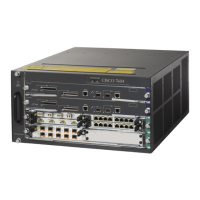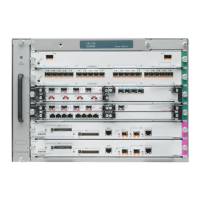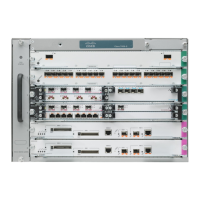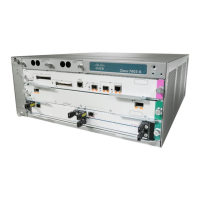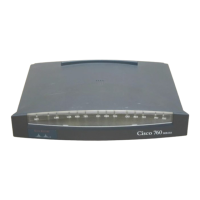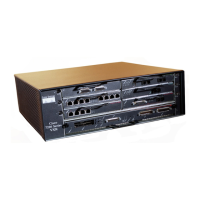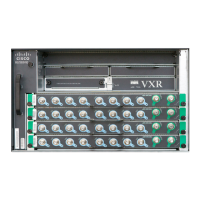10-5
Cisco 7600 Series Router Cisco IOS Software Configuration Guide—12.1E
78-14064-04
Chapter 10 Configuring Private VLANs
Configuring Private VLANs
Note With Release 12.1(11b)E and later, when you are in configuration mode you can enter EXEC mode-level
commands by entering the do keyword before the EXEC mode-level command.
Configuring a VLAN as a Private VLAN
To configure a VLAN as a private VLAN, perform this task:
This example shows how to configure VLAN 202 as a primary VLAN and verify the configuration:
Router# configure terminal
Router(config)# vlan 202
Router(config-vlan)# private-vlan primary
Router(config-vlan)# end
Router# show vlan private-vlan
Primary Secondary Type Interfaces
------- --------- ----------------- ------------------------------------------
202 primary
This example shows how to configure VLAN 303 as a community VLAN and verify the configuration:
Router# configure terminal
Router(config)# vlan 303
Router(config-vlan)# private-vlan community
Router(config-vlan)# end
Router# show vlan private-vlan
Primary Secondary Type Interfaces
------- --------- ----------------- ------------------------------------------
202 primary
303 community
This example shows how to configure VLAN 440 as an isolated VLAN and verify the configuration:
Router# configure terminal
Router(config)# vlan 440
Router(config-vlan)# private-vlan isolated
Router(config-vlan)# end
Router# show vlan private-vlan
Primary Secondary Type Interfaces
------- --------- ----------------- ------------------------------------------
202 primary
303 community
440 isolated
Command Purpose
Step 1
Router(config)# vlan vlan_ID
Enters VLAN configuration submode.
Step 2
Router(config-vlan)# private-vlan {community |
isolated | primary}
Configures a VLAN as a private VLAN.
Router(config-vlan)# no private-vlan {community |
isolated | primary}
Clears the private VLAN configuration.
Note These commands do not take effect until you exit
VLAN configuration submode.
Step 3
Router(config-vlan)# end
Exits configuration mode.
Step 4
Router# show vlan private-vlan [type]
Verifies the configuration.
